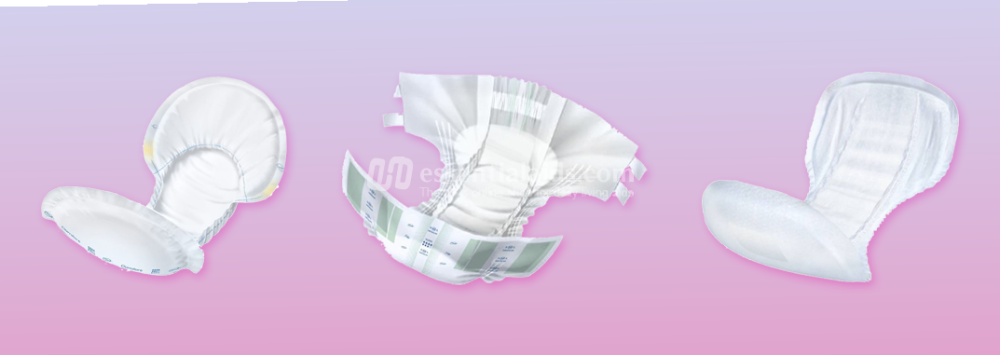
Males and Urinary Incontinence
Sally Madeley-Carr, OT26 Apr 2022
Urinary incontinence means accidental leakage of urine and can be a symptom of another condition.
Whilst the onset of urinary incontinence increases in later years, it can come on at any age.
With urinary incontinence, men and women experience similar symptoms, all pointing to a change in bladder control.
Urinary incontinence can be classified as urge, stress, overflow, mixed, or total incontinence:
- urge incontinence is when it may become an urgent need to quickly pass urine
- stress incontinence is when the pressure in the bladder makes it impossible to hold onto the bladder content any longer
- overflow incontinence can be caused by a blockage or obstruction, which prevents the bladder from fully emptying, resulting in frequent leaking
- mixed incontinence is a combination of stress incontinence and an overactive bladder and can occur as a result of a prostate operation
- total incontinence means that the bladder can no longer hold onto urine, leading to regular toilet visits and frequent leaks.
Urinary incontinence can also be because of enuresis, which is the accidental passing of urine by someone who can normally control their bladder. This condition affects one per cent of the general population and can be caused by a genetic link, an overactive bladder, or smaller functional bladder capacity (when the bladder has a lower capacity for the amount of urine it can hold).
Diagnosis of Cause
To assess the cause of urinary incontinence, your doctor will first address your medical history. Taking samples of both urine and blood will help with establishing the cause.
Once the cause is known, bladder control issues are very treatable.
Urinary incontinence can be brought on by diabetes, as well as dementia, Alzheimer's disease, Parkinson's disease and multiple sclerosis (MS). In men, it can also be brought on by an enlarged prostate and also prostate surgery. For both sexes, it can also be brought on by causes unknown, so establishing the reason is extremely important.
Other causes can include:
- a chronic cough
- a bladder infection
- obesity (extra weight places pressure on your bladder)
- constipation
- loss of sphincter ( a ring of muscle which acts as a valve, to open and close a tube and, in this case, the internal urethral sphincter) strength
- an obstruction in the urinary tract
- neurological damage (diseases such as dementia, Alzheimer's, Parkinson's and multiple sclerosis (MS) can affect your brain's signal as to when to urinate)
- weak pelvic floor muscles
- a side-effect of some medications
- lifestyle choices (smoking, drinking, insufficient physical activity).
Managing Incontinence
There are several ways in which we can help ourselves prevent or control urinary incontinence:
- Managing Fluids
Drinking smaller amounts during the day, as well as planning drinks around any planned social activity times, will allow you to manage toilet breaks to fit around your needs for that day
Try to sometimes hold on to the need to visit the toilet, as delay training can help strengthen your muscles
When visiting the toilet to urinate, hang around a little longer to 'go' again, as this will help towards fully emptying your bladder and stave off any urgent need to go again soon.
- Lifestyle Choices
Some lifestyle choices / well-established habits can have adverse effects on our health:
- smoking irritates the bladder and smoking-induced coughing can also cause leakage
- caffeine (present in tea and coffee), soda and alcohol can all have adverse effects on bladder control
- lack of activity leads to both weaker muscles (to include loss of sphincter strength) and obesity.
- Weight Awareness
Obesity causes pressure on the bladder and, indeed, on all of the body i.e. muscles, bones and organs. Losing weight will go a long way to improve your health overall.
The two main points to address are diet and increased physical activity.
Diet
Standard advice on a good diet plan is to reduce fats, cut back on carbohydrates and eat more of a 'Mediterranean style' food plan i.e. enjoying vegetables, fruit, pulses (e.g. lentils, all kinds of beans, peas, barley and chickpeas) and salad ingredients (e.g. lettuce, chard, rocket, watercress, tomatoes and onions)
A Mediterranean diet does not mean still being hungry after eating but reducing fat and carbohydrate intake.
Processed foods (including takeaways) are high in fat and sugar and so should be avoided, or kept to an absolute minimum. Many tinned foods also hold high sugar content.
Be sensible about what you choose to drink, as some fluids prove to be irritants and so exacerbate urinary incontinence. Excessive drinking will also fill the bladder quicker and so lead to more frequent needs to urinate.
Increased Physical Activity
Physical activity does not have to be heavy going; start off light (walking and gardening) and build up your level when it feels right for you (walking longer distances, swimming, or taking up a sport).
Swimming is said to be an excellent activity for overall health, as it uses all of your body's muscles.
Products Available to Manage Male Incontinence
There are several products available to help with urinary incontinence, allowing day-to-day living to continue without issue. Such products could be any of the following:
- Incontinence pads designed specifically for men. No longer bulky, incontinence pads for men are unnoticeable and give great comfort and confidence. Using similar technology to that used for producing babies' nappies, the hydrophobic layer pulls the wetness away from the surface of the pad and allows the user's skin to stay dry and free from irritation. Make your choice of incontinence pad by checking the product details, as cheaper products could prove more expensive over time. Look for pads which last for up to six hours, which means the user will be less inconvenienced by a need for frequent renewing. A high level of absorbency is a point to look for, as this helps neutralise odours.
- Disposable incontinence pants for women (also known as adult pull-ups) prove a good choice for people with active lifestyles. These come in a variety of sizes and give added protection, if the elastic edging fits closely around the penis and scrotum.
- Washable incontinence pants for men come in normal boxer, brief and Y front styles, simply having a built-in absorbent layer for any needs during the day.
- A catheter is a thin tube which is placed into the bladder via the penis, to allow urine to exit the bladder. This device can prove somewhat uncomfortable to wear and can sometimes cause infection.
- An external catheter involves catching urine flow in a bag attached to the user's leg, through a tube which is attached to the penis via a condom-like fitting. During night time hours, the bag can be placed outside the bed and then re-attached to the user's leg for daytime use.
- A drip collector is a waterproof pad which fits over the penis and works best with men who have constant but minimal leakage. Underwear needs to be close-fitting, to hold this padding in place.
- A Cunningham clamp is worn on the penis, to prevent urine from escaping and is removed when the user wishes to empty his bladder. Uncomfortable at first, this item is re-usable and so may prove to be a more economical option.
Other Incontinence Protection to Consider
For people who can get caught short quickly, or have total incontinence, it is advisable to also use protection on seats and mattresses.
- Seat Protection
Protective seat and chair pads don't draw attention, as they simply look like extra cushioning or padding. Waterproof pads will protect the seat from damages such as odour and staining and keep the chair in usable condition for longer.
Seat protection is also available for use on car seats.
- Mattress Protection
A fully covering mattress protector is good practice for all, as it keeps the mattress free from sweat, as well as any spillage of bodily fluids or drinks
Washable bed pads give an added layer of protection and, should an accident happen during the night, the pad is much easier to change than the full mattress protector. Look for bed pads which have waterproof backing and check product details for the level of absorbency.
Summary
Urinary incontinence can affect all ages, though later years may lead to a higher likelihood.
Getting the right size of incontinence pad or pants will increase levels of protection.
Incontinence pads for men are designed to be worn inside close-fitting, but also comfortable, underwear.
A healthy diet and regular physical activity will help you lose weight, will tighten up your muscles and will also reduce any constipation, all taking pressure off your body and encouraging smoother, all-round, functioning.
When choosing incontinence pads for men, as well as for women, always check the product details e.g. the size, whether they are washable, their absorbency level and how long a pad lasts for your type of incontinence.
Seat and mattress protection are sensible purchases, as they will cut down on work and will protect the item they cover against odour and staining.

Sally Madeley-Carr, OT
Sally qualified as an Occupational Therapist in 1996 and is a well-respected professional in the field of rehabilitation equipment and living aids. She has worked in private practice and within the NHS, developing a broad experience with adults and children. Click here for Sally's registration with the Health and Care Professions Council. The HCPC regulates health, psychological and social work professionals in the UK.